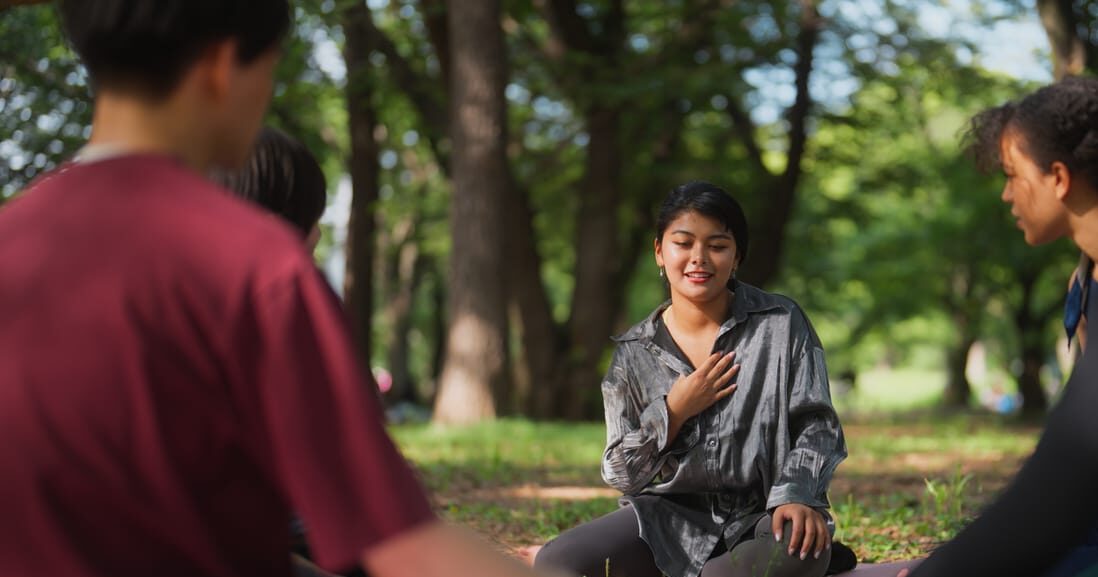When we injure ourselves physically, we immediately look for help. For example, when we cut ourselves, we reach for disinfectant and plasters. However, do we support an emotional injury in equivalent ways?
Dr Guy Winch, a psychologist who advocates for better emotional first aid, shares in his TEDx talk how we must start valuing our emotional health. We know what we need to stay physically healthy – eat well, exercise, and get enough sleep. However, when we are emotionally unwell, how do we cope?
In this post, we’ll discuss emotional first aid, why it is so important, and how you can equip yourself with the skills to offer proper emotional support to others.
What is emotional first aid?
Emotional first aid is just like physical first aid. It involves paying attention to our emotional state and tending to our wounds like a physical injury or illness. Emotional first aid is about responding to emotional pain and injury. Loneliness, for example, is one of the most damaging kinds of psychological injury, but how do we treat it? Another example is failure, which can adversely affect our perceptions of our abilities.
The solution lies in tending to our physiological health and practising what Dr Winch calls emotional hygiene. One of the most profound ways to tend to our psychological health is to build our self-esteem and treat our emotional wounds with the same love and compassion we would give to a good friend.
Practising psychological hygiene also means breaking bad habits like rumination, which can cause us to get stuck in negative thought patterns. Simple practices like distracting yourself with another activity can help break the rumination cycle.
According to Dr Winch’s talk, practising emotional first aid means taking action when you’re lonely, changing your responses to failure, protecting your self-esteem, and battling negative thinking, all of which can help build emotional resilience.
It is also essential to remember that our mind, body, and emotions are connected. Physical health impacts our emotional health, so we must exercise, eat, and sleep well to care for both.
Practical emotional first aid
Dr Winch’s TEDx talk provides many helpful pointers on managing our emotional wellbeing. However, looking after ourselves can be easier said than done, especially if we are dealing with complex and traumatic emotional experiences.
The EmotionAid® Protocol is one way to learn to offer appropriate emotional support. This modality is body-oriented and based on the Somatic Experiencing technique that Peter Levine developed. It is also based on multidisciplinary research in fields such as physiology, psychology, and neuroscience.
Somatic Experiencing explained
Somatic Experiencing works to heal unresolved trauma and stress disorders. The theory behind this is that our nervous system becomes dysregulated after a traumatic or emotionally wounding event. This dysregulation can manifest as a fight, flight or freeze response.
When we get trapped in a “freeze” response, we can get “stuck” or dysregulated. This modality “unlocks” trapped survival energy through various somatic techniques to work through difficult emotions and help us regulate our nervous systems.
This modality has been used for over 40 years and is evidence-based. With current developments in neuroscience and the use of technology to learn more about the brain and nervous system, we can take this approach even further.
The development of the EmotionAid Protocol
While Somatic Experiencing offers an evidence-based and successful way to treat and manage our emotional wellbeing, only some people will realistically become a Somatic Experiencing practitioner.
Therefore, it’s essential to have accessible ways to practise this approach. Developed by Dr Cathy Lawi, the EmotionAid protocol takes this modality and, through a five-step protocol, gives individuals and mental health service providers the tools to practise emotional first aid on their own with or with their clients.
These five steps include breathwork, tapping, and grounding techniques, which help to self-soothe and regulate the nervous system. They also involve taking some time to allow feelings and sensations to arise without judgement and to let our bodies “discharge.” Finally, the five steps involve using emotional resources to help us feel calmer, such as thinking of a friend or a special place.
To summarise, EmotionAid® is a structured way to apply the emotional first aid that Dr Winch discusses, which we all need.
How to learn more about emotional first aid
If you want to learn more about using emotional first aid in your mental health services practice or your personal life, register for our Introducing the EmotionAid® Protocol workshop.
In this online workshop, you’ll learn more about the neurophysiology of stress and trauma and how we hold it in our bodies. You’ll also gain a better understanding of how to manage and release anxiety, burnout, stress, and trauma.
For those who would like to expand their emotional first aid toolkit, you might also be interested in some of our other related short online courses:
- Building Positive Self-esteem
- Fundamental Counselling Skills
- Dealing with Grief and Loss
- Intro to Crisis and Trauma
- Enhancing Mental Health
For more information, browse our course list.
